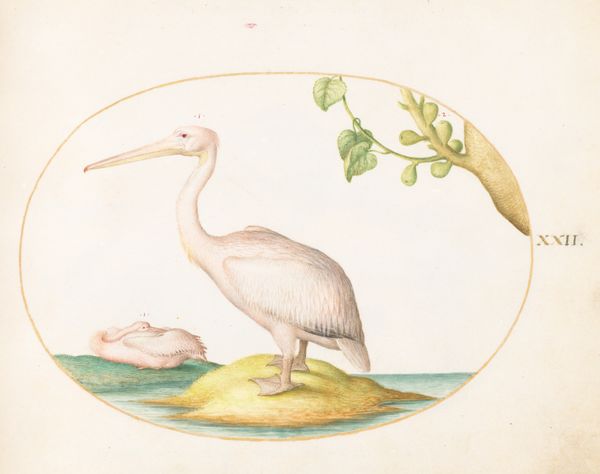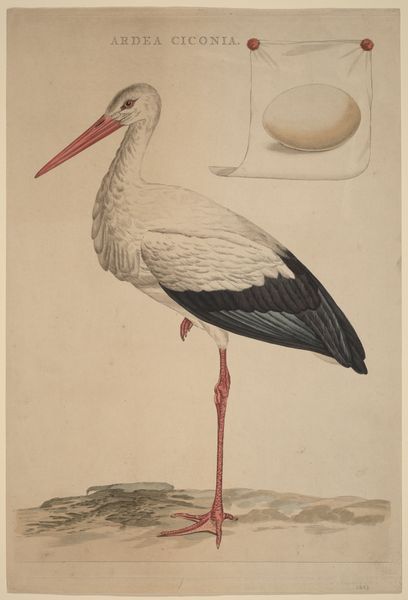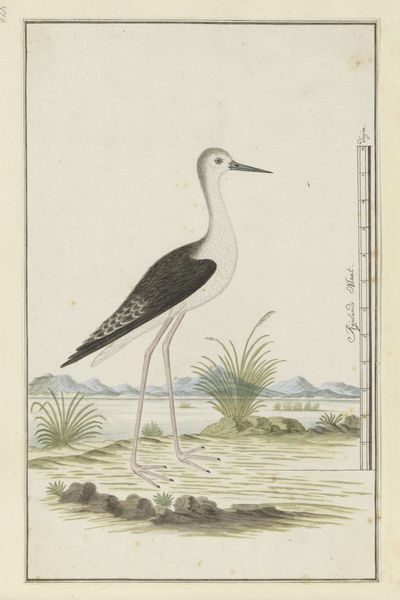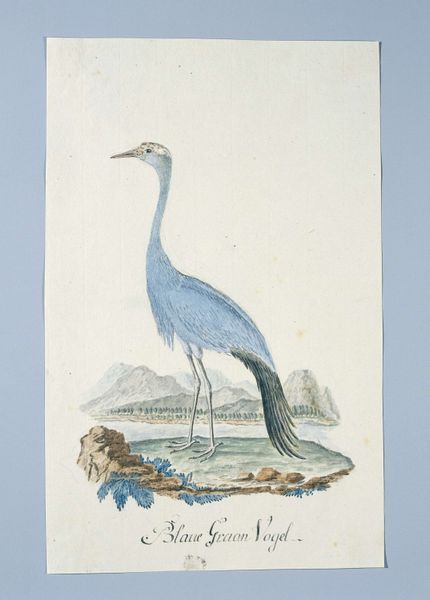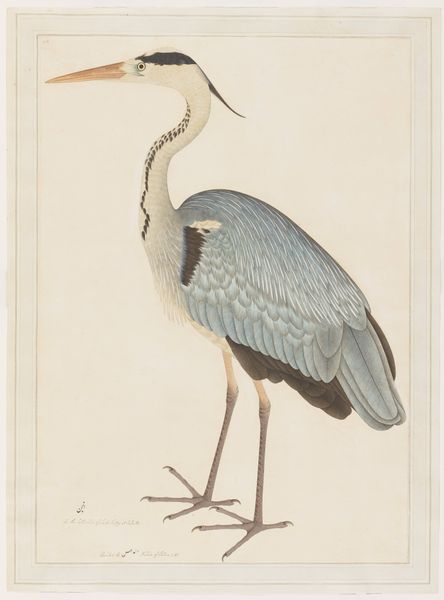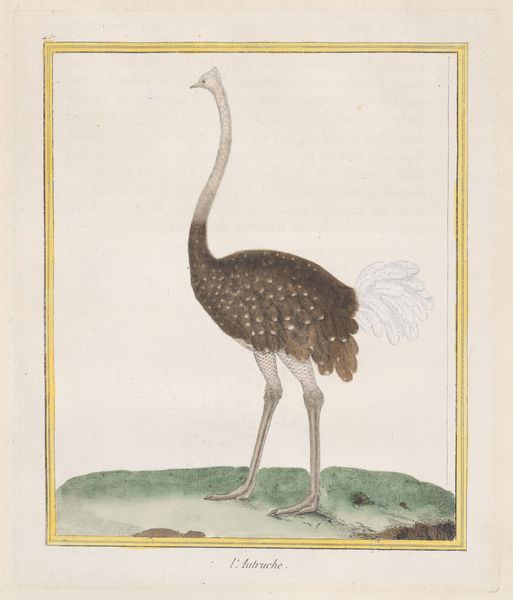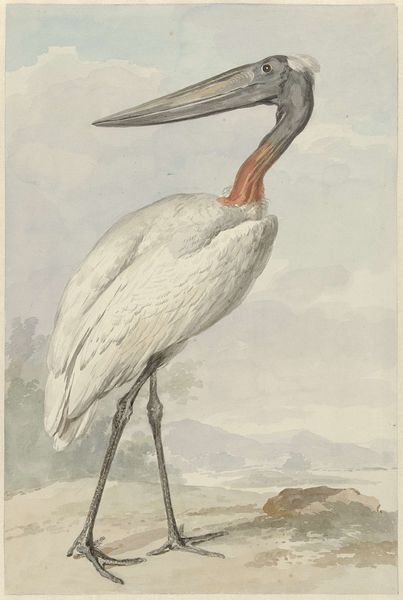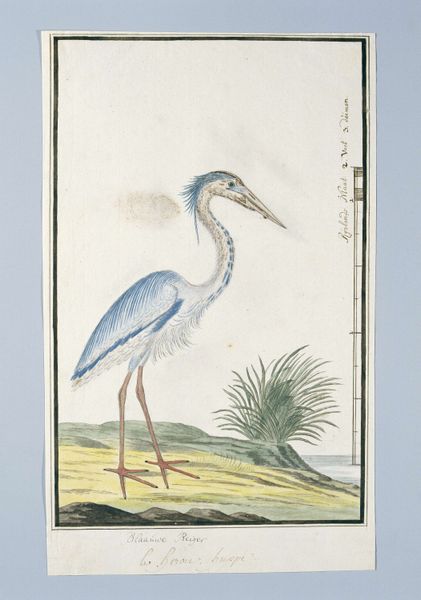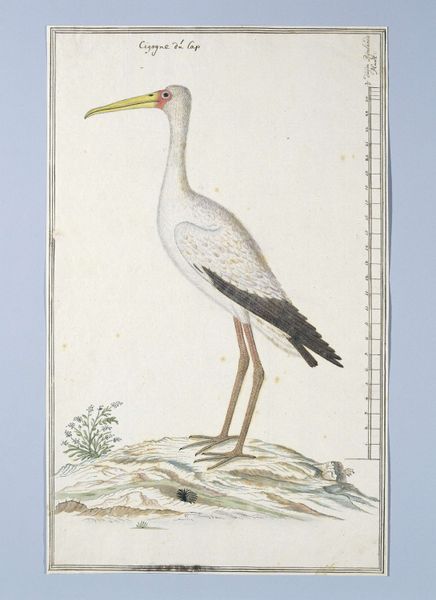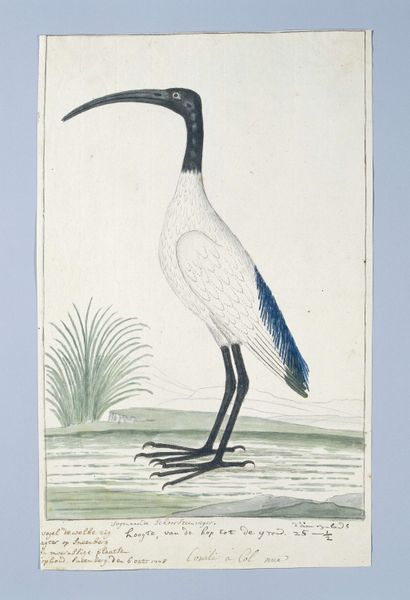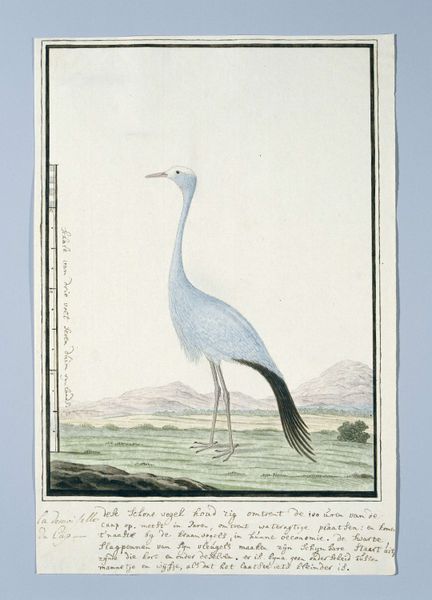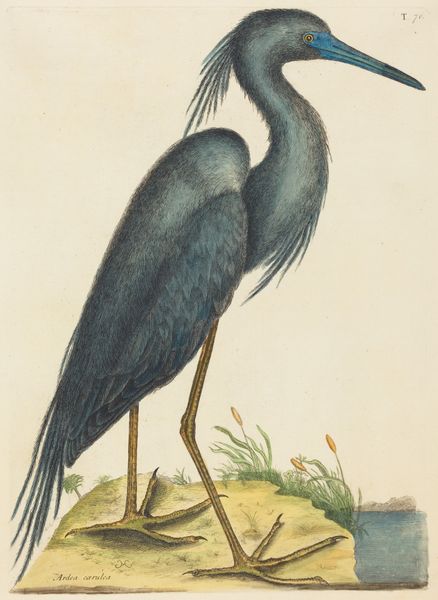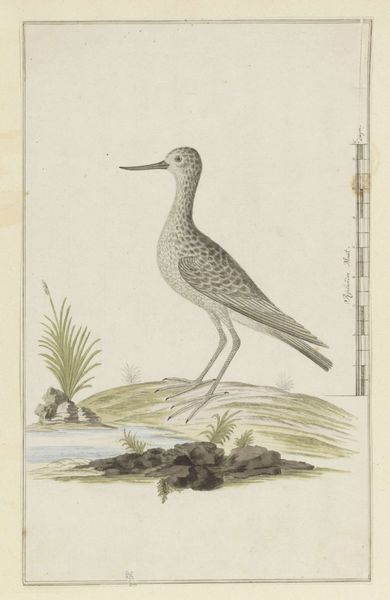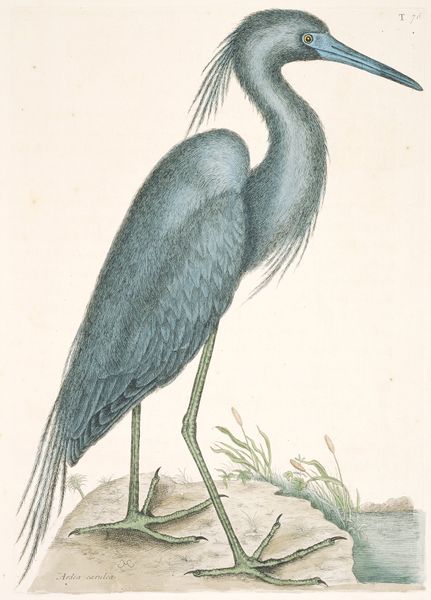
L'Aigrette (Egret), from "Histoire Naturelle de Oiseaux" 1770 - 1786
0:00
0:00
drawing, print, watercolor
#
drawing
# print
#
landscape
#
watercolor
Dimensions: Plate: 9 5/8 × 8 3/16 in. (24.5 × 20.8 cm) Sheet: 12 3/16 in. × 9 in. (30.9 × 22.8 cm)
Copyright: Public Domain
Editor: We're looking at "L'Aigrette," or "Egret," a watercolor, drawing and print by François Nicolas Martinet from between 1770 and 1786. There's such a delicate feel to it, and the bird almost looks superimposed on its little landscape. What strikes you when you see this piece? Curator: What jumps out to me is how this image circulated and functioned within the enlightenment's pursuit of scientific knowledge. These detailed prints, often hand-colored, were crucial in disseminating information about the natural world to a broader audience, wasn't it? Think of illustrated encyclopedias like Diderot's. Editor: So, less about pure artistry, more about documentation? Curator: It’s both! While it served a scientific purpose, the image also participated in constructing a specific aesthetic appreciation for nature. Consider the implications of framing the bird within a landscape: what effect do you think that had on the contemporary viewer's understanding? Editor: I guess it creates a sense of harmony, a tamed natural world presented for our viewing pleasure. It feels a little...colonial somehow? Curator: Exactly! The act of classification and documentation was tied to power, to ownership of knowledge and resources. The images could also fuel a desire for exotic goods, impacting trade and colonial expansion. What do you notice about the composition itself that speaks to these power dynamics? Editor: Hmm, well, the bird is so centrally located, like a specimen pinned in place. It feels very controlled. Curator: And how might its rendering in print contribute to this effect of control and wider accessibility? Editor: The prints allowed for wider viewership...and perhaps also reinforced particular viewpoints about nature and its place within society. It's certainly more complex than just a pretty picture. Curator: Precisely. Understanding its role within the visual culture and political landscape gives us a deeper understanding, wouldn't you say?
Comments
No comments
Be the first to comment and join the conversation on the ultimate creative platform.
